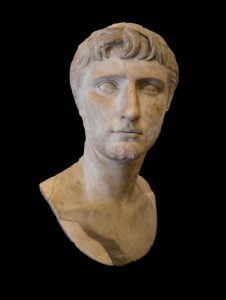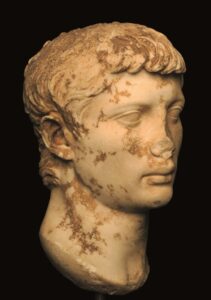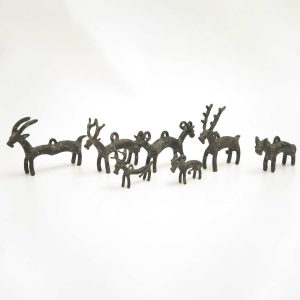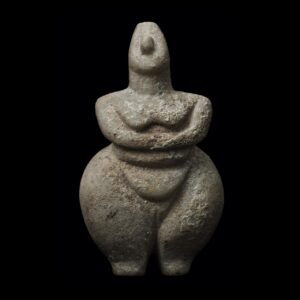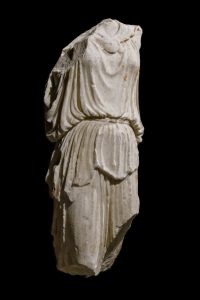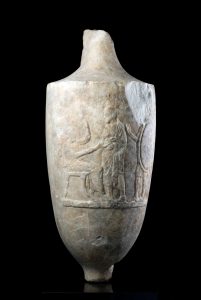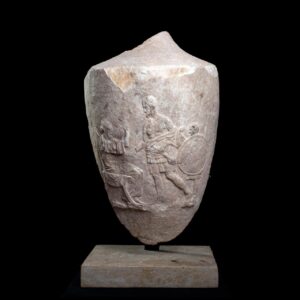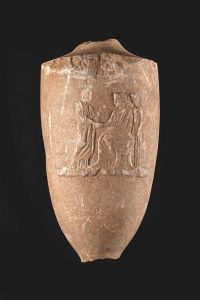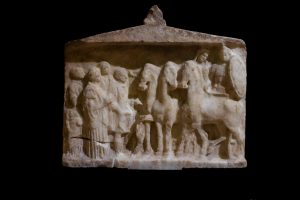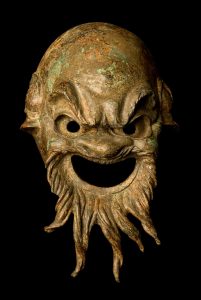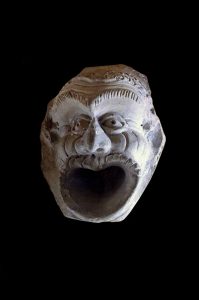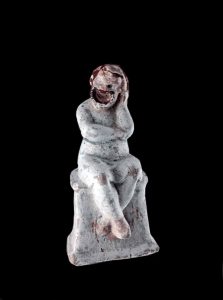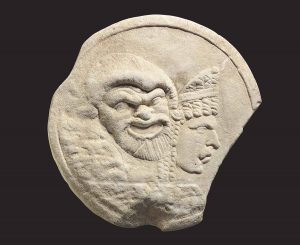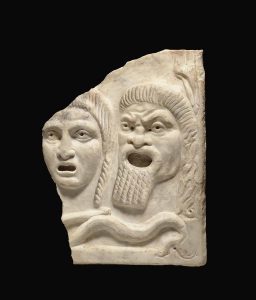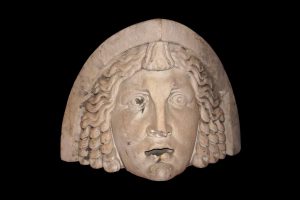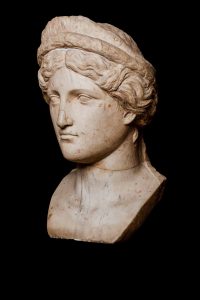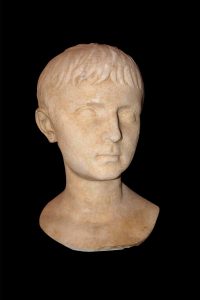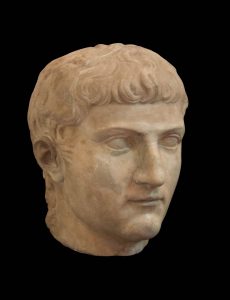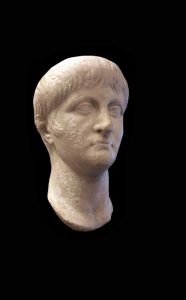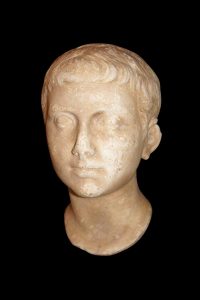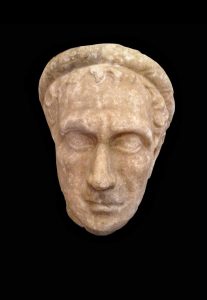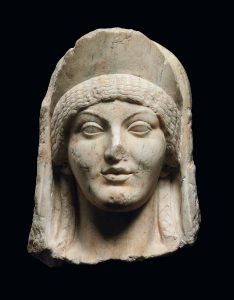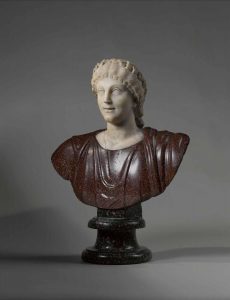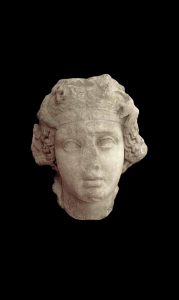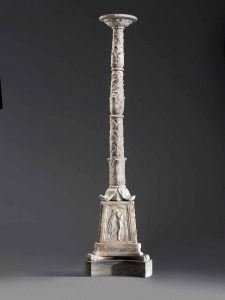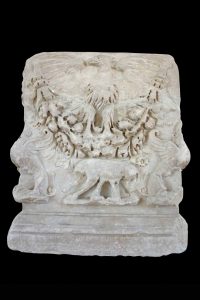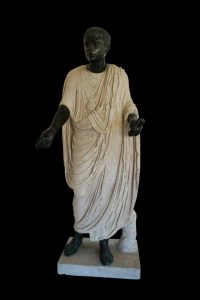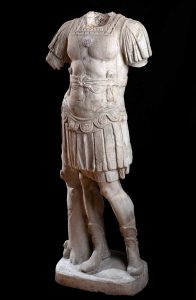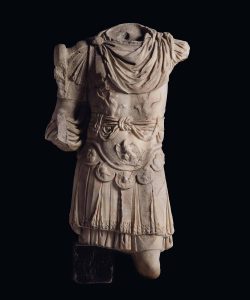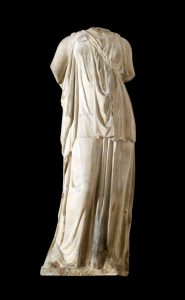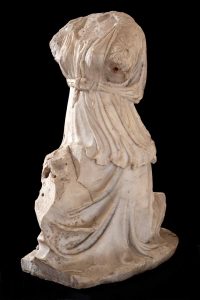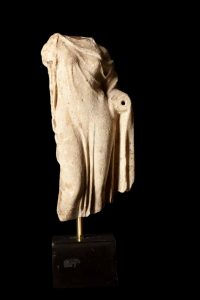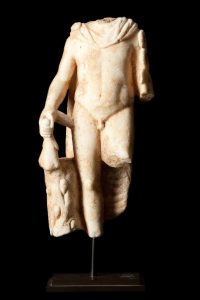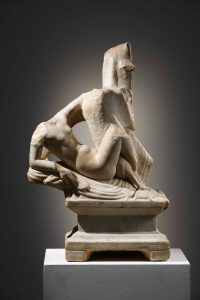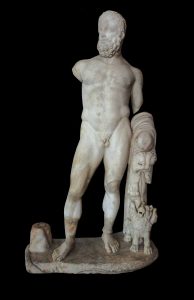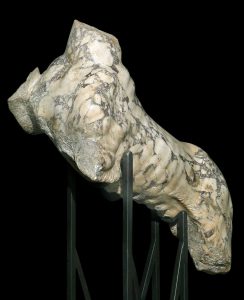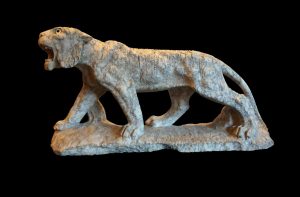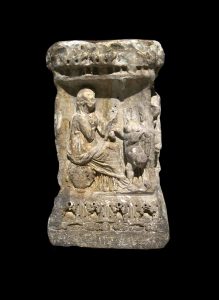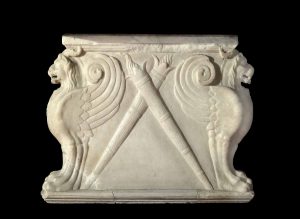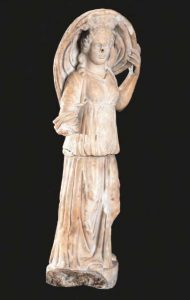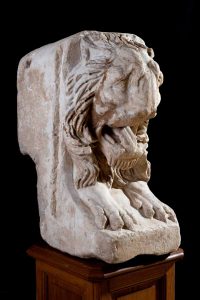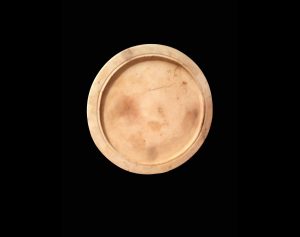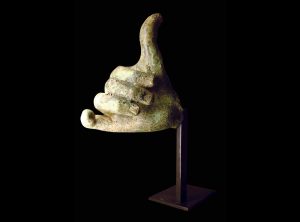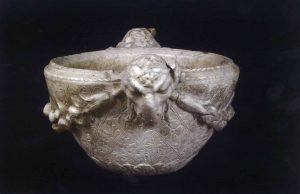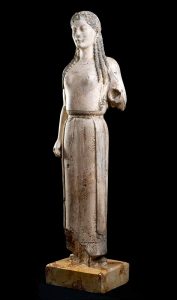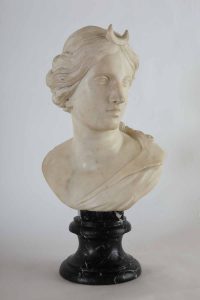The archaeological collection comprises sculptures and some Greek and Roman reliefs in marble of different provenance, purchased due to the their value given the iconography depicted on them and the historical importance as vestiges of the ancient art.
The marble Attic Lekythos (D.M. 04/11/1987) on which is depicted a parting scene dated on the first half of the IV century BC, and the statue representing Artemis, a variation in Parian marble of a well known statue in the Dresden collection which itself comes from an original attributed to Praxiteles, are particularly interesting from an archaeological point of view. The same iconographic originality is present in the statue representing a kneeling woman which probably represents a Roman Province asking for the Imperial clemency. The collection also comprises the head of Marcus Claudius Marcellus (D.M. 20/10/2008), identified by Prof. Antonio Giuliano and on exhibition in the Roman National Museum of Palazzo Massimo on the occasion of the event organized for the ten-year period of the opening of the Museum (December 19th – June 7th 2009).
The Foundation recently acquired a bronze mask of extremely fine workmanship, as yet the largest mask preserved from the Hellenistic age (first half of the 1st century BC), which depicts Papposilenus, the oldest and wisest Silenus. In ancient times it was hung with plant garlands as part of the furnishings in the peristyle of a rich domus. The sculpture of Dionysus, which once belonged to a similar environment, stands with a panther skin and an unusual garland of tiny roses encircling his waist, dating back to the second half of the 2nd century AD.
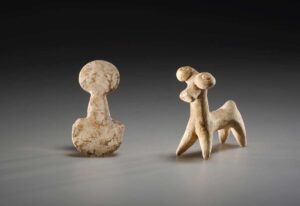
Kusura Type Idol and a Bull
Marble (idol); clay (bull)
First Bronze Age II, 2700-2300 BC
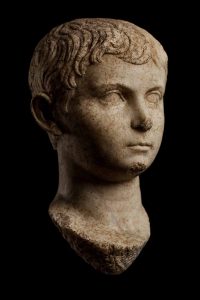
Portrait of Gaius Caesar Cuenca-Sorgente Type
White marble
End of the 1st century BC

Statue of Dionysus
Italian fine-grained white marble
Second half of the 2nd century AD
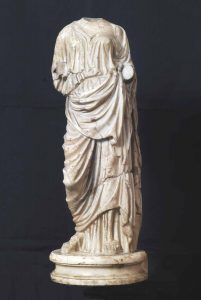
Statue of woman with draped clothing, c.d. Abbondanza Grimani type
White marble
2nd century AD
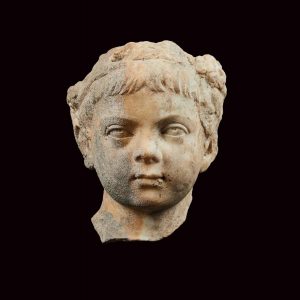
Portrait of Caracalla as a child
Pentelic marble
End of 2nd – begin of 3rd cent. AD.
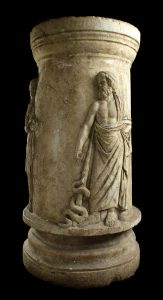
Votive altar with Asclepius, Igea and Telesphorus
White marble
Half of 2nd century AD
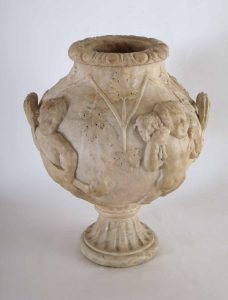
Decorative Vase shaped as an Urn, with Allegorical Figures
ANDREA DI LAZZARO CAVALCANTI, CALLED BUGGIANO (Borgo a Buggiano 1412 – Firenze 1462) and BOTTEGA DI BERNARDO GAMBARELLI, CALLED ROSSELLINO? (Settignano? 1409 ca. – Firenze 1464)
Marble


